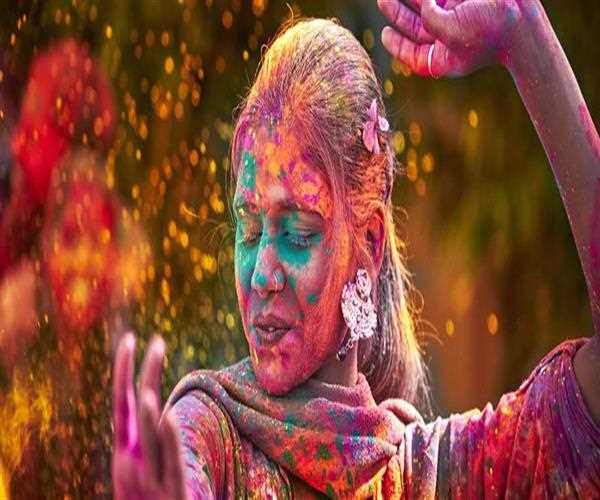
12-Dec-2022
Spiritual Dimensions of Indian Culture
India is a land of many religions, and each one has its own set of beliefs and practices. Hinduism, Buddhism, Sikhism, Jainism, and Zoroastrianism are all practiced throughout the country. But what about the spiritual dimension of Indian culture? How do Indians view the spiritual realm, and how does this affect their everyday lives? In this blog post, we will explore the spiritual dimensions of Indian culture and how they shape the way Indians live. From the concept of karma to the caste system and more, read on to learn more about India’s unique take on spirituality.
Defining Spirituality
- Spirituality is a broad and often misunderstood concept. It can be difficult to define, because it means different things to different people.
- For some, spirituality is about a belief in a higher power or God. It's about connecting with that power and finding meaning and purpose in life.
- Others may see spirituality as more of a personal journey or exploration. It's about discovering who you are and what you believe in. It can involve practices like meditation, journaling, or spending time in nature.
- There is no single right or wrong way to be spiritual. What matters is that you find a path that works for you and helps you connect with something greater than yourself.
Various Dimensions of Spirituality in India
- There are many dimensions to spirituality in India. One can find a spiritual dimension in almost every aspect of Indian culture. From the ancient Vedic texts to the modern day yoga practices, spirituality is an integral part of Indian culture.
- The Vedic texts are some of the oldest and most sacred texts in India. They contain a wealth of knowledge about the universe and human beings. The Upanishads, which are a part of the Vedas, contain teachings on meditation and self-realization.
- Yoga is another important aspect of Indian spirituality. Yoga means “union” in Sanskrit, and it is the union of mind, body, and spirit. There are many different types of yoga, each with its own unique benefits. Yoga can be used for relaxation, exercise, or as a path to self-realization.
- Indian spirituality is not limited to Hinduism. Buddhism, Jainism, and Sikhism are also major religions in India that have their own unique spiritual traditions. For example, Buddhism emphasizes compassion and mindfulness, while Jainism focus on non-violence and self-control.
- No matter what religion or spiritual tradition one follows, there is a rich tapestry of spirituality to be found in India.
The Relationship between Spirituality and Religion
- In India, spirituality and religion are often seen as two sides of the same coin. This is because both spirituality and religion play an important role in Indian culture.
- Spirituality is seen as a way to connect with the divine, or to achieve a higher state of consciousness. It is often seen as something that is beyond the physical world. Religion, on the other hand, is seen as a way to live life in accordance with the teachings of a particular faith.
- There is no one right or wrong answer when it comes to the relationship between spirituality and religion. It is up to each individual to decide what works best for them.
The Role of Spirituality in Indian Culture
- In India, spirituality is not just a personal belief or practice, but is deeply intertwined with the country’s culture and way of life. From ancient times, spirituality has been seen as a way to connect with the divine, achieve inner peace and harmony, and live in balance with the natural world.
- Spirituality is an integral part of Indian culture and can be seen in all aspects of life, from the food we eat and the clothes we wear, to the way we celebrate festivals and conduct business. It is also evident in our art, music and dance, which often have religious or spiritual themes.
- For many Indians, spirituality is about more than just religious beliefs – it is a way of life. It helps us to make sense of the world around us and our place in it. It can give us strength in times of adversity and comfort in times of sorrow. It can also help us to find joy and happiness in everyday moments.
Conclusion
The spiritual dimensions of Indian culture are vast and varied. From the ancient Vedic texts to the modern day practices of yoga and meditation, there is much to explore in this rich tradition. Whether you are looking to deepen your understanding of your own spirituality or simply want to learn more about another culture, studying the spiritual dimensions of India is a rewarding experience.

SEO and Content Writer
I am Drishan vig. I used to write blogs, articles, and stories in a way that entices the audience. I assure you that consistency, style, and tone must be met while writing the content. Working with the clients like bfc, varthana, ITC hotels, indusind, mumpa, mollydolly etc. has made me realized that writing content is not enough but doing seo is the first thing for it.
Comments
Join Our Newsletter
Subscribe to our newsletter to receive emails about new views posts, releases and updates.
Copyright 2010 - 2025 MindStick Software Pvt. Ltd. All Rights Reserved Privacy Policy | Terms & Conditions | Cookie Policy